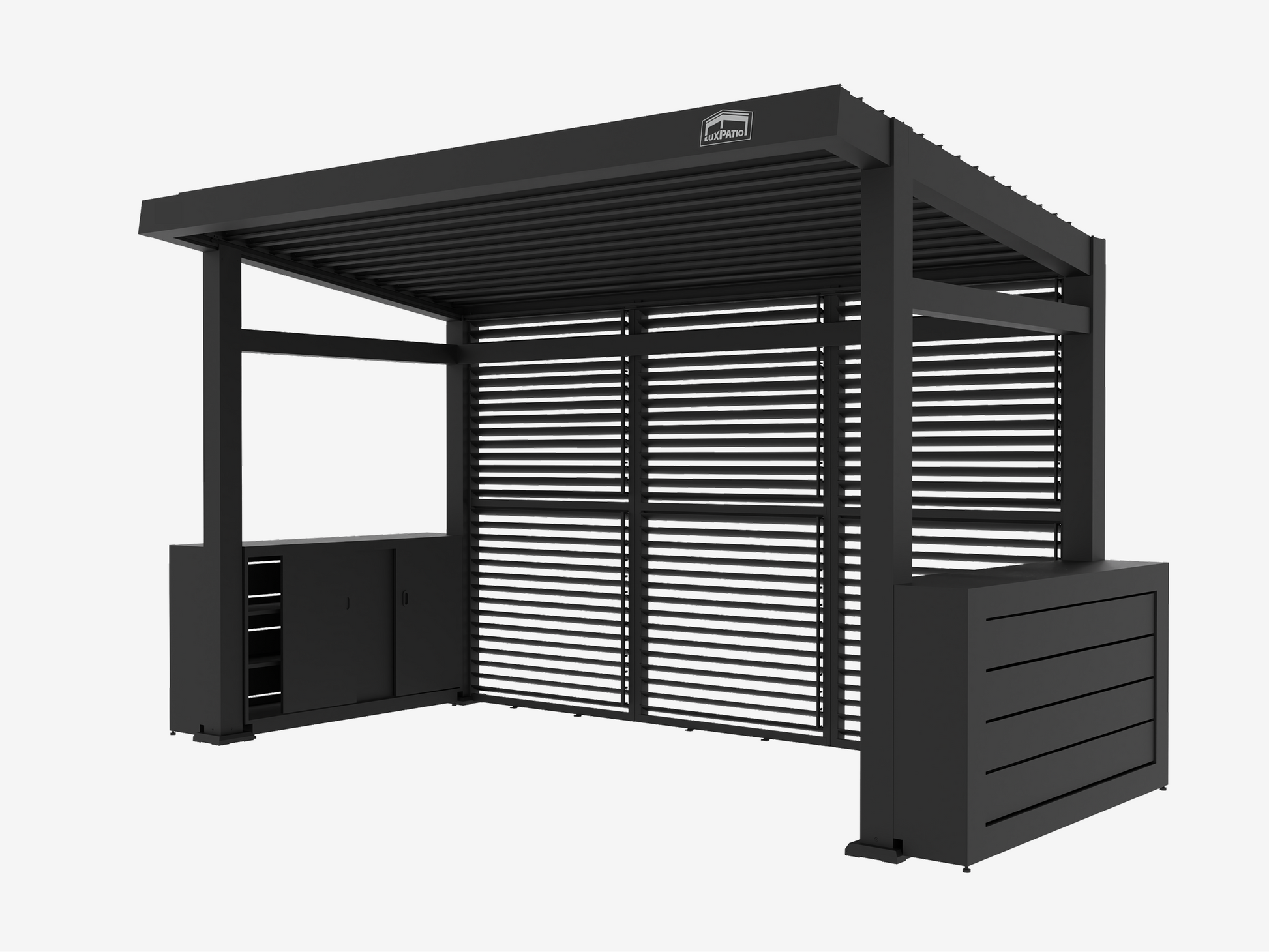Unveiling the Secrets: Transform Your Outdoor Space with the Perfect Pergola!
Imagine stepping into your backyard and being greeted by a beautifully constructed pergola, a structure that not only enhances the aesthetic appeal of your outdoor space but also offers a sanctuary from the harsh sun. Pergolas have surged in popularity over recent years, transforming ordinary gardens into inviting retreats. In this article, we will delve into the world of pergolas, exploring what they are, the various types available, their numerous benefits, and essential tips for installation and maintenance. Whether you're looking to create a cozy nook for relaxation or an elegant space for entertaining, understanding pergolas will help you make an informed decision for your outdoor setting.

What is a Pergola?
A pergola is an outdoor structure defined by its vertical posts or pillars that support cross beams and an open lattice roof. Traditionally, pergolas were used to support climbing plants, providing shade and shelter while allowing light to filter through. Historically, these structures date back to ancient Rome and were primarily built from wood, serving as pathways and walkways adorned with vines and flowers. In modern landscaping, pergolas have evolved to serve multiple purposes, from creating an outdoor dining space to marking the entrance to a garden. Their versatility makes them a favorite among homeowners and landscape designers alike, as they can be adapted to fit various styles and uses, making them a staple in contemporary outdoor design.
Types of Pergolas
Pergolas come in several types, each designed to fit different spaces and needs. Freestanding pergolas are standalone structures that can be placed anywhere in your yard, creating a focal point for gardens or patios. Attached pergolas, on the other hand, are connected to a building, often extending from a home’s exterior to provide shade for decks or patios. For those seeking versatility, retractable pergolas are an excellent option, featuring adjustable canopies that offer control over sunlight and shade. When it comes to materials, wood remains a classic choice, providing a natural look that blends seamlessly with outdoor environments. However, metal and vinyl options are gaining popularity due to their durability and low maintenance requirements, allowing homeowners to enjoy their outdoor spaces without constant upkeep.
Design Styles
Pergolas can be designed in various styles to complement the overall aesthetic of your home and garden. Traditional pergolas often feature intricate wooden designs and classic shapes, making them suitable for vintage or rustic-themed spaces. Modern pergolas, with their sleek lines and minimalist designs, fit perfectly in contemporary settings. For those who prefer a more natural look, rustic pergolas crafted from reclaimed wood or featuring organic shapes add charm and warmth to any landscape. By choosing a design style that resonates with your existing outdoor decor, you can create a harmonious setting that enhances your yard's beauty.
Benefits of Installing a Pergola
The advantages of adding a pergola to your outdoor space are numerous. Firstly, they provide much-needed shade, making your outdoor areas more comfortable during hot summer days. This is particularly beneficial for those who enjoy outdoor dining or gatherings, as a pergola can create a cooler environment. Additionally, pergolas enhance the aesthetic appeal of your yard, acting as a beautiful architectural feature that draws the eye. They can also increase property value, making your home more attractive to potential buyers. Furthermore, pergolas create a defined space in your garden, allowing you to establish separate areas for relaxation, dining, or gardening, thus maximizing the utility of your outdoor space.
How to Install and Maintain a Pergola
Installing a pergola might seem daunting, but with a few simple steps, you can create your own outdoor oasis. Begin by selecting a suitable location, ensuring that it's level and free from obstructions. Next, prepare the ground by marking where the posts will go and digging holes for them. Once the posts are set in concrete, attach the cross beams securely. It’s essential to ensure that your pergola is stable and well-anchored. For maintenance, regular inspections are key. Check for signs of wear or damage, and clean any debris from the lattice to prevent rot. Depending on the material of your pergola, you may need to apply a weather sealant or paint to protect it from the elements, ensuring your structure remains beautiful and functional for years to come.
Enhancing Your Outdoor Space with a Pergola
In conclusion, a pergola can dramatically transform your outdoor space into a stunning retreat. By understanding the different types of pergolas, their benefits, and how to install and maintain them, you can make a well-informed decision that enhances your home’s outdoor aesthetics and functionality. Whether you choose a classic wooden design or a modern metal structure, a pergola is an investment in your property that promises enjoyment for years to come. So take the plunge, consider your options, and start planning your perfect outdoor haven today!







